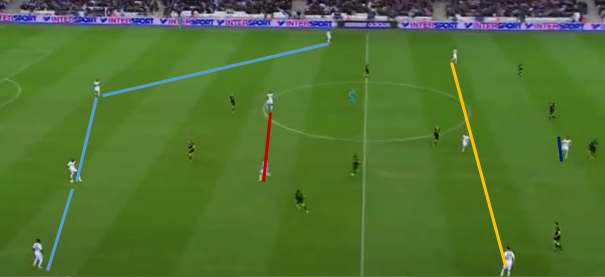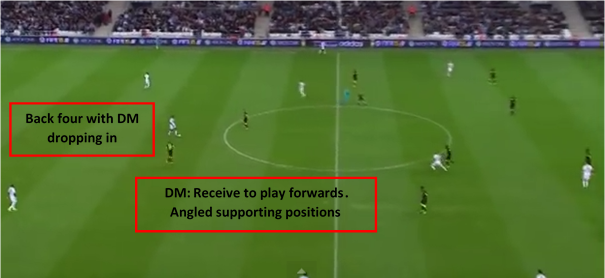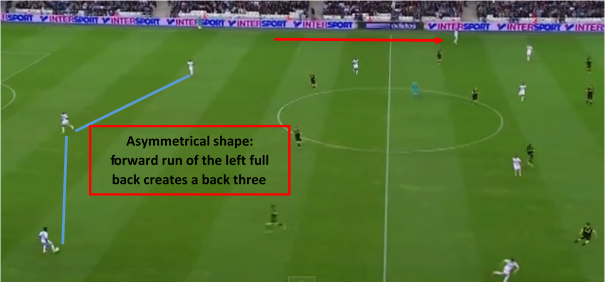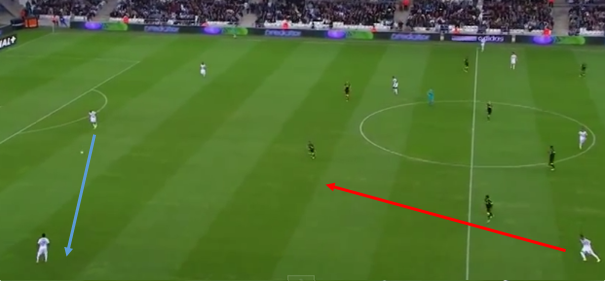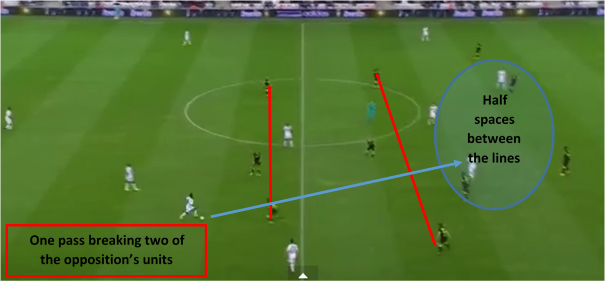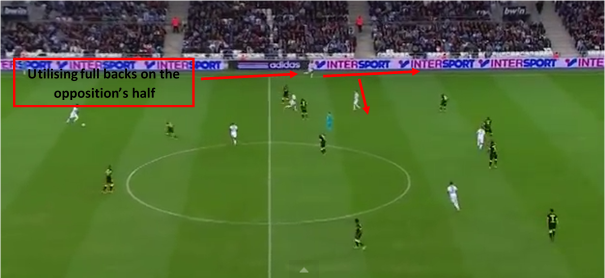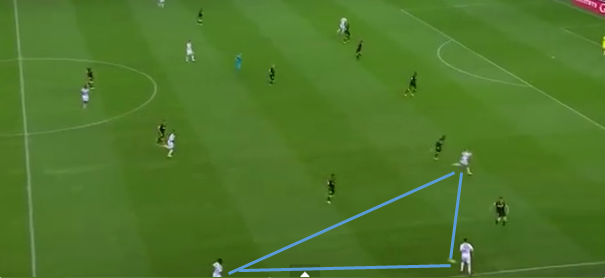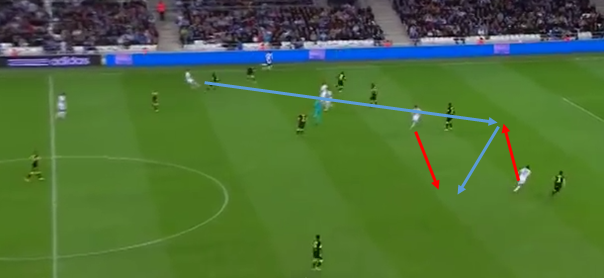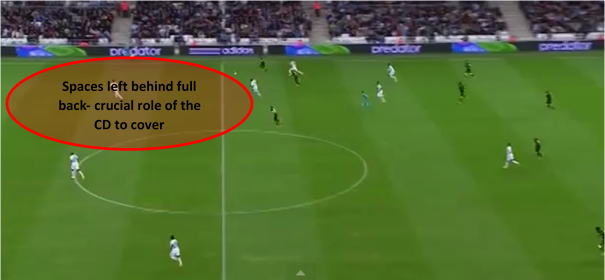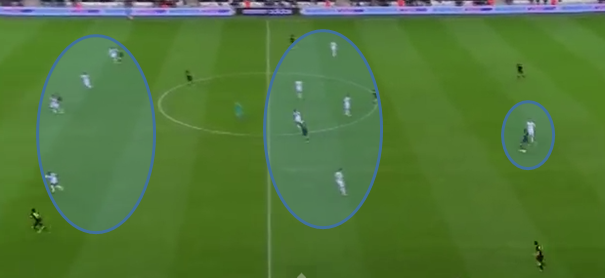By Alex Trukan
Argentinian coach, Marcelo Bielsa, that has recently led Athletic Bilbao and Chilean national team is known for attacking and dynamic style of play with high energy and pace. His teams can be distinguished by extreme work rate, vertical passes, quick possession as well as attacking through the wings. In the meantime, his ideas are driving the project of bringing Olympique Marseille back to the top football. Despite quite visible and unorthodox style of play, Bielsa has employed numerous formations over the last seasons including: 4-2-3-1, 3-3-3-1, 3-3-1-3 or 4-3-3. One of his major formations working in OM was 4-2-3-1 which was often employed against weaker teams.
Basic Shape in Possession
When in possession of the ball, Bielsa has used four defenders who were usually positioned asymmetrically (one full back forming back three, second one higher up the field), two defensive midfielders (one playing higher, one dropping into defensive midfielder role), number 10 playing off striker’s shoulder and supporting on the flanks, two wingers playing wide and central striker who moves across and in behind the opposition back four.
Building Up from the Back
Despite the fact that most of the Bielsa’s teams dominate in percentage of possession per game, they also have high percentage of success in long passes. That is because once the ball is played into defenders, their aim is to look for vertical passes and progress through the thirds with pace. First shape employed when building up from the back involves two CD in line, two full backs higher up the field (around half way line) and one CM dropping into the pocket of space to receive and turn to play forwards. Two other midfielders are positioned on the angle to support and receive.
Second way to play out from the back is converting into back three with one of the full backs (usually left) stepping up into midfield. One of the midfielders will then drop in front central defender and rest of the midfielders and striker will push up to create space and stretch the opposition lines. This strategy encourages playing longer ball to the striker or into wide areas (channels between opposition’s centre backs and full backs).
If the ball is not played directly to the final third, midfielders make clever movements with the aim to receive in the central areas and switch play. In the example below, central midfielder’s starting position is wider and higher up the pitch to then be able to come deeper in the pocket of space (in between opposition’s forward and midfield lines) as the ball is played to the right central defender.
One of the main characteristics of Bielsa’s teams are vertical passes breaking opposition’s lines. That is especially dangerous having positioned midfielders between defending and midfield lines of the opposition. In this situation, wingers will often come inside to create overload.
If the ball can’t be played through the centre, the team is often using wide areas to break through. Full backs here start to play crucial role (on the opposition’s half), as they stay out wide and use the spaces created by wingers moving inside and creating overload in midfield. Overlaps are one of the mostly utilised movements in this system of play.
Attacking on the Opposition’s Half
Once the ball is the final third of the pitch, the midfielders play important role in supporting play on the flanks. As we can see on the diagram below, midfielder is making a forward run, while at the same time, full backs starts to make an overlap what then creates triangles on the wings and possible overload. That enables the team to progress into the areas around the penalty box.
Bielsa is a big advocate of wing play and crosses into the box. One of the most remarkable tactics employed by his teams are overloads in the penalty box achieved by forward runs of strikers and midfielders. A minimum of 2-3 runners are always needed in the box. The timing and confidence in the run are two important things to work on. Also, a defensive support and cover is needed in case transition to defence.
Another important role of the central striker is to act as a target man and feed midfielders facing forwards. That links to vertical passes from the defenders as well balls played from wide areas. Horizontal movement as a unit of striker and offensive midfielder is used.
Transition to Defence and Defending
Because full backs are often involved in attacks high up the pitch, the threat in transition to defence are spaces left in behind them. Here comes the role of the defensive covering midfielder as well as back three (able to affect both sides of the pitch when defending).
[wpsharely id="2988"][/wpsharely]When the team manages to get organised behind the ball, they employ a classic 4-2-3-1 shape. The striker tries to force play into one way (make it predictable), midfielders condense spaces for opposition midfielders to receive, while the back four track the runners and cover spaces in behind.
Bielsa’s variation of a 4-2-3-1 system is an interesting alternative for a team who possess offensive full backs, central defenders who can play out from the back as well as midfielders able to join the strikers in the final third. Wingers in turn should be great crossers, while the striker should be versatile enough to go in behind the opposition defence as well as act as a traditional target feeding target men.
By Alex Trukan, Development Coach, Nottingham Forest

